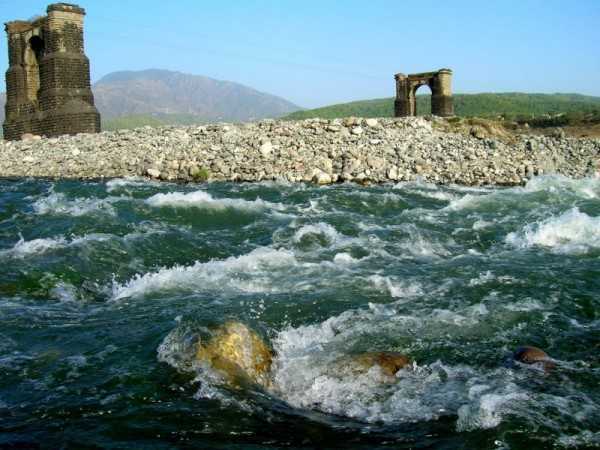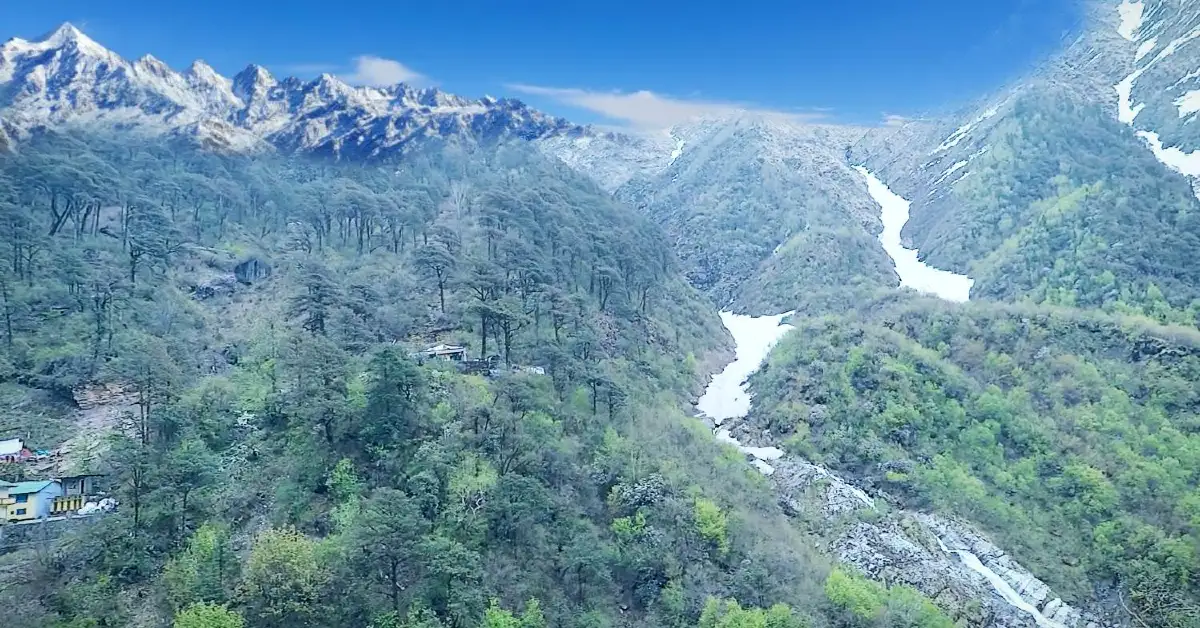The Yamuna River is the largest tributary of the Ganges River. The Yamuna river originates from a place called Yamunotri Kantha of the Yamunotri glacier, situated on the slopes of the Kalind mountain, located in the north-west of the Bandarpoonch mountain of Uttarkashi. Yamuna is also called Kalindaja or Kalindi due to its origin from Kalind Mountain. Yamunotri is one of the holiest Char Dhams of Hinduism. Where crores of people come every year for darshan.
Emerging from the Yamunotri mountain, this river flows through many mountain ranges and valleys, leaving the Himalayas and entering the valley of Doon. And it flows out of the state while flowing in Uttarkashi and Dehradun. The tributaries of Yamuna are Rishiganga, Hanumanganga, Krishnagad, Banadgad, Kamalgad, Khutnugad, Barnigad, Bhadrigad, Mugragad, Gadoligad, Pujyargad, Tons, Asan etc.

The main tributary of the Yamuna is the Tons River, which carries two and a half times more water than the Yamuna. It is formed by meeting the Supin river originating from the Swargarohini glacier of the northern slope of the Bandarpunchha mountain in Uttarkashi and the Rupin river coming from the Dodra Kwar region of Himachal Pradesh, which is also known as Tamsa for some distance. After flowing 148 km on the border of Uttarakhand and Himachal, it joins the Yamuna between Kalsi and Dakpathar.
After meeting the Tons (Tamsa), the Yamuna moves forward forming the borders of Uttarakhand and Himachal Pradesh.
After Tons, near Rampur Mandi of Dehradun, the river Asan meets from the left side. Asan originates from the west of Asharodi-Dehramarg. After this Yamuna gets out of the state near Dhalipur.
The length of Yamuna in Uttarakhand is 136 km from Yamunotri to Dhalipur. While the total length from Yamunotri to Allahabad is Rs. 1384 kms. Huh.
In the plains where Yamuna is presently flowing, there it has not been flowing forever. It is known from mythological legends and historical references, although Yamuna has been present for the last thousands of years, yet its flow has been changing from time to time. Of all the places the Yamuna has changed during its long life, very few have been known about it. In prehistoric times, the Yamuna flowed near Madhuban, where Shatrudhan ji first established the city of Mathura on its banks, which is mentioned in Vishnu Purana and Valmiki Ramayana.
It is known from the Puranas that the Yamuna used to flow near Govardhan in ancient Vrindavan. Whereas at present she is about 4 miles away from Govardhan. There are two small villages ‘Jamunavati’ and Parsauli near Govardhan. There are mentions of the flow of Yamuna at some point in time.
In Uttar Pradesh, many major cities like Bulandshahr, Faridabad (Haryana), Aligarh, Mathura, Braj, Vrindavan, Mathura, Agra, Etawah etc. are settled on the banks of river Yamuna.
The Yamuna River is the largest tributary of the Ganges River. The Yamuna river originates from a place called Yamunotri Kantha of the Yamunotri glacier, situated on the slopes of the Kalind mountain, located in the north-west of the Bandarpoonch mountain of Uttarkashi. Yamuna is also called Kalindaja or Kalindi due to its origin from Kalind Mountain. Yamunotri is one of the holiest Char Dhams of Hinduism. Where crores of people come every year for darshan.
Emerging from the Yamunotri mountain, this river flows through many mountain ranges and valleys, leaving the Himalayas and entering the valley of Doon. And it flows out of the state while flowing in Uttarkashi and Dehradun. The tributaries of Yamuna are Rishiganga, Hanumanganga, Krishnagad, Banadgad, Kamalgad, Khutnugad, Barnigad, Bhadrigad, Mugragad, Gadoligad, Pujyargad, Tons, Asan etc.
The main tributary of the Yamuna is the Tons River, which carries two and a half times more water than the Yamuna. It is formed by meeting the Supin river originating from the Swargarohini glacier of the northern slope of the Bandarpunchha mountain in Uttarkashi and the Rupin river coming from the Dodra Kwar region of Himachal Pradesh, which is also known as Tamsa for some distance. After flowing 148 km on the border of Uttarakhand and Himachal, it joins the Yamuna between Kalsi and Dakpathar.
After meeting the Tons (Tamsa), the Yamuna moves forward forming the borders of Uttarakhand and Himachal Pradesh.
After Tons, near Rampur Mandi of Dehradun, the river Asan meets from the left side. Asan originates from the west of Asharodi-Dehramarg. After this Yamuna gets out of the state near Dhalipur.
The length of Yamuna in Uttarakhand is 136 km from Yamunotri to Dhalipur. While the total length from Yamunotri to Allahabad is Rs. 1384 kms. Huh.
In the plains where Yamuna is presently flowing, there it has not been flowing forever. It is known from mythological legends and historical references, although Yamuna has been present for the last thousands of years, yet its flow has been changing from time to time. Of all the places the Yamuna has changed during its long life, very few have been known about it. In prehistoric times, the Yamuna flowed near Madhuban, where Shatrudhan ji first established the city of Mathura on its banks, which is mentioned in Vishnu Purana and Valmiki Ramayana.
It is known from the Puranas that the Yamuna used to flow near Govardhan in ancient Vrindavan. Whereas at present she is about 4 miles away from Govardhan. There are two small villages ‘Jamunavati’ and Parsauli near Govardhan. There are mentions of the flow of Yamuna at some point in time.
In Uttar Pradesh, many major cities like Bulandshahr, Faridabad (Haryana), Aligarh, Mathura, Braj, Vrindavan, Mathura, Agra, Etawah etc. are settled on the banks of river Yamuna.

